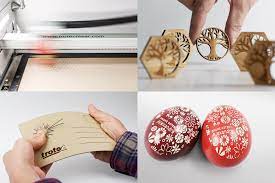The Rise of Eco-Friendly Lasers: Pioneering Sustainable Technology
In today’s rapidly evolving technological landscape, the demand for eco-friendly solutions has never been greater. As industries across the globe strive to reduce their environmental impact, laser technology has emerged as a key player in the quest for sustainability.
Traditional laser systems have long been associated with high energy consumption and environmental concerns. However, recent advancements in laser technology have paved the way for a new generation of eco-friendly lasers that offer both superior performance and reduced environmental footprint.
One of the key features of eco-friendly lasers is their energy efficiency. By optimizing power consumption and reducing waste heat generation, these lasers consume significantly less energy compared to traditional models. This not only lowers operational costs for businesses but also helps decrease carbon emissions and overall environmental impact.
Furthermore, eco-friendly lasers are designed with sustainability in mind throughout their lifecycle. From manufacturing processes that prioritize recyclable materials to end-of-life disposal practices that minimize environmental harm, these lasers are engineered to be environmentally responsible at every stage.
Another important aspect of eco-friendly lasers is their versatility and applicability across various industries. Whether used for precision cutting in manufacturing, medical procedures, or entertainment purposes, these sustainable laser systems deliver high performance without compromising on environmental responsibility.
As more companies embrace sustainable practices and prioritize eco-conscious solutions, the adoption of eco-friendly lasers is expected to rise significantly in the coming years. By investing in this innovative technology, businesses can not only enhance their operational efficiency but also contribute to a greener future for generations to come.
Join the movement towards a more sustainable future with eco-friendly lasers – paving the way for a cleaner, greener world powered by cutting-edge technology.
Shining a Light on Sustainability: Understanding the Environmental Impact of Laser Technologies in Engraving, Printing, and Cutting
- How does laser engraving affect the environment?
- Is A laser Printer Better For the environment?
- Is laser cutting fabric sustainable?
- How environmentally friendly is laser cutting?
How does laser engraving affect the environment?
Laser engraving offers a more eco-friendly alternative to traditional engraving methods due to its precise and efficient nature. Unlike conventional techniques that involve harsh chemicals or excessive material waste, laser engraving produces minimal waste and emissions. The controlled beam of the laser allows for intricate designs with high accuracy, reducing the need for additional resources and minimizing environmental impact. Additionally, the energy-efficient operation of laser engraving machines further contributes to sustainability by conserving power and reducing carbon footprint. Overall, laser engraving stands out as a sustainable solution that prioritizes environmental responsibility while delivering exceptional results.
Is A laser Printer Better For the environment?
When considering the environmental impact of a laser printer, it’s essential to weigh both the advantages and challenges associated with this technology. Laser printers are generally more energy-efficient than inkjet printers, as they use toner cartridges that last longer and require less frequent replacement. This efficiency can lead to reduced energy consumption over time. However, the production and disposal of toner cartridges can contribute to electronic waste and chemical pollution if not managed responsibly. To mitigate these concerns, opting for eco-friendly toner cartridges made from recycled materials and ensuring proper recycling practices can help minimize the environmental footprint of laser printers. Ultimately, making informed choices about printer usage and maintenance can play a significant role in determining whether a laser printer is better for the environment.
Is laser cutting fabric sustainable?
Laser cutting fabric offers a sustainable alternative to traditional cutting methods due to its precision, efficiency, and minimal material waste. By using laser technology, fabric manufacturers can achieve intricate designs with high accuracy, reducing the need for excess material and minimizing the environmental impact of production processes. Additionally, laser cutting produces clean edges without fraying, resulting in a higher-quality finished product that requires less post-processing. Overall, the eco-friendly nature of laser cutting fabric makes it a preferred choice for sustainable fashion and textile industries seeking to reduce their carbon footprint and promote environmentally conscious practices.
How environmentally friendly is laser cutting?
Laser cutting is considered a relatively environmentally friendly process compared to traditional cutting methods due to several key factors. The precision of laser cutting minimizes material waste, as the focused beam ensures accurate cuts with minimal kerf width. This efficiency translates to less material being discarded, reducing overall waste production. Additionally, laser cutting is a non-contact process that does not require direct physical contact between the cutting tool and the material, resulting in lower wear and tear on equipment and longer tool life. Furthermore, advancements in laser technology have led to the development of eco-friendly lasers that are energy-efficient and designed with sustainability in mind, further enhancing the environmental friendliness of laser cutting processes.

No Responses